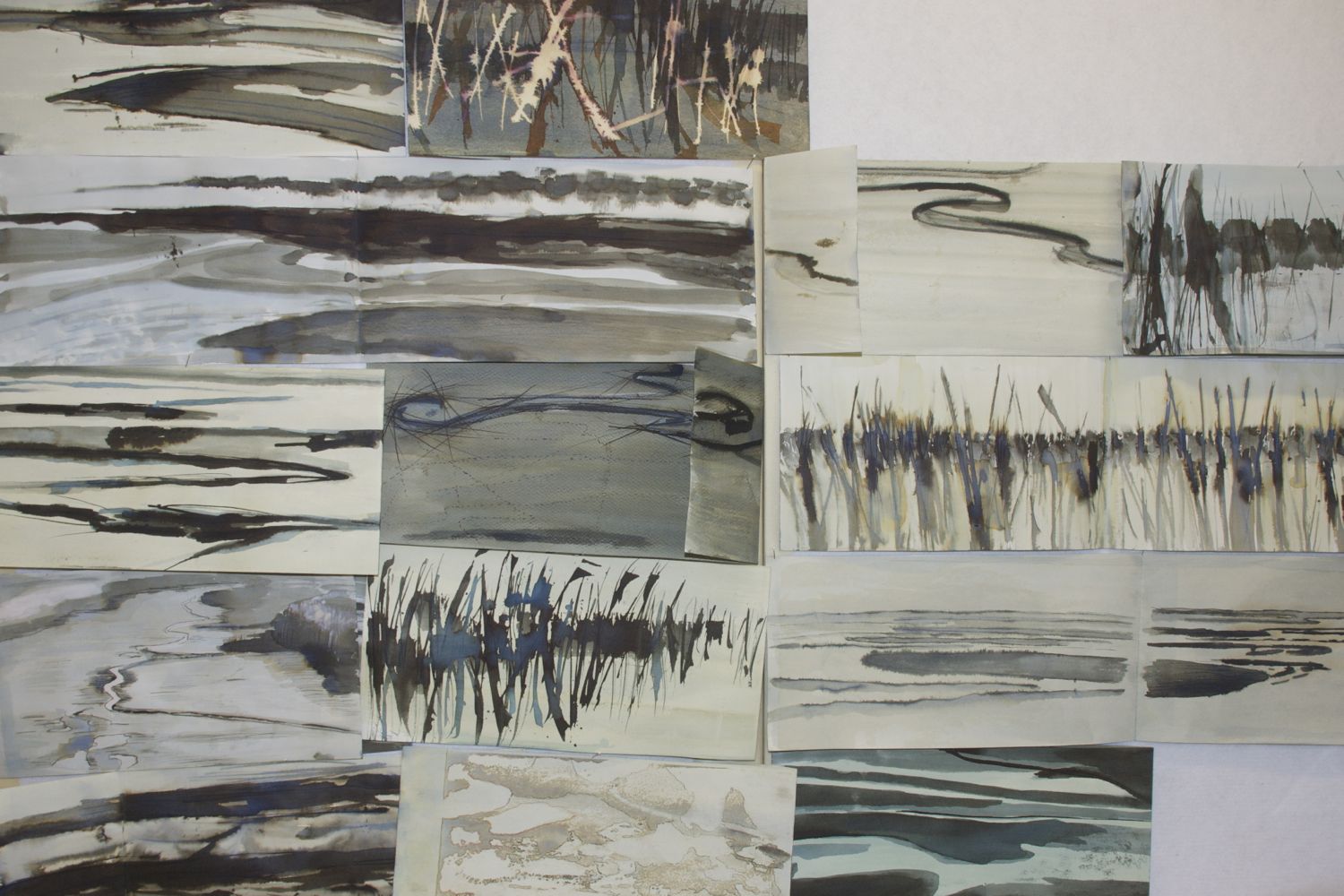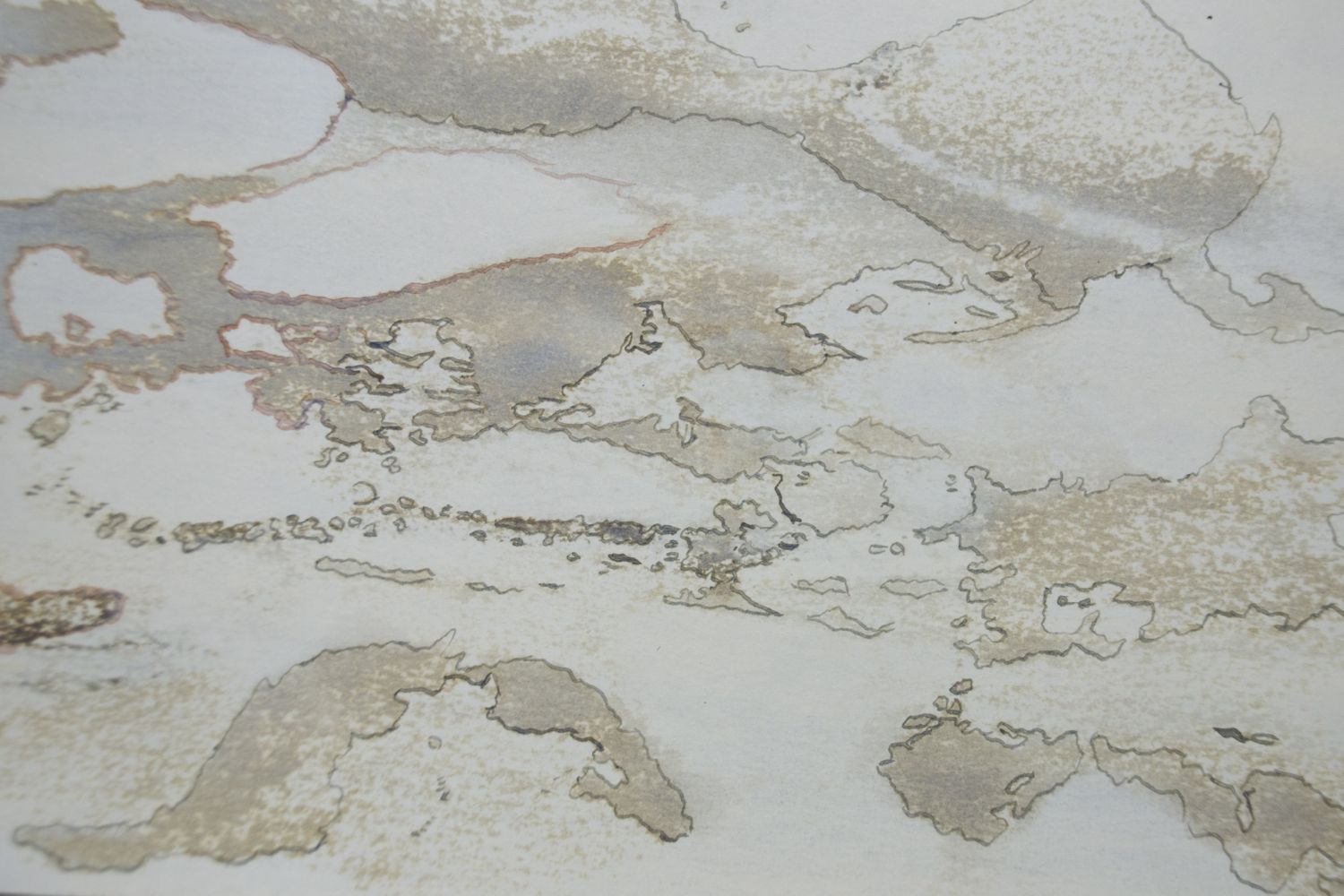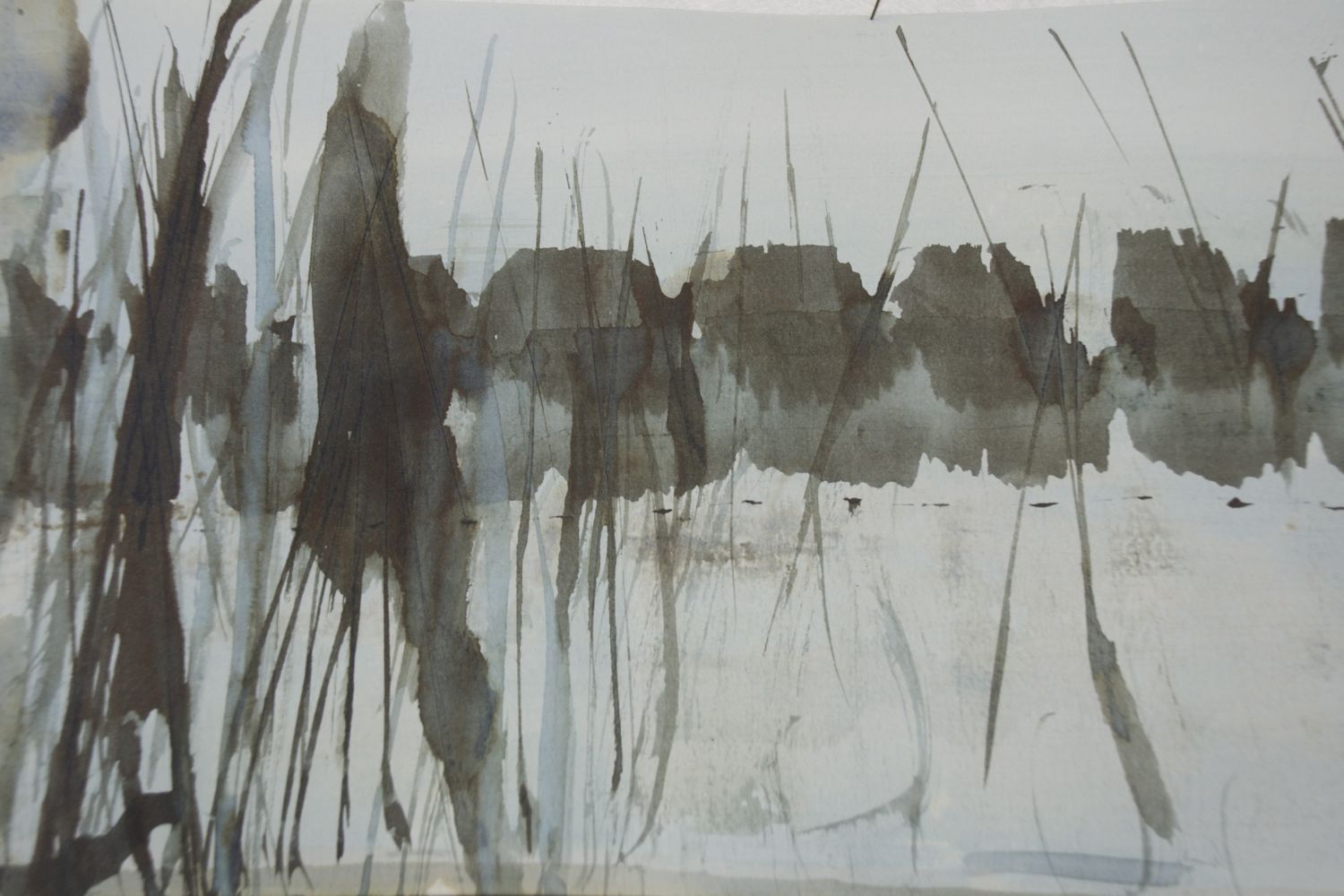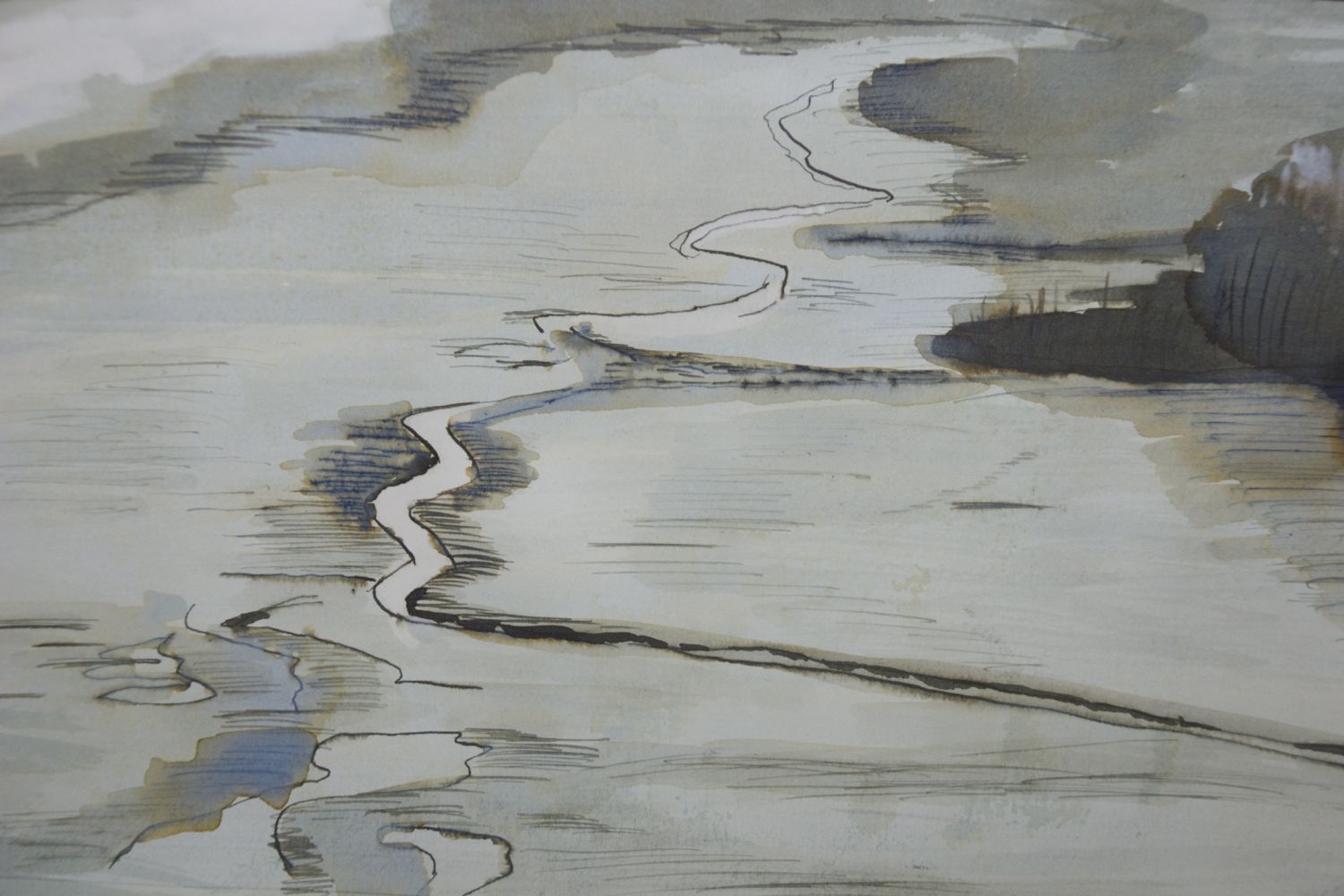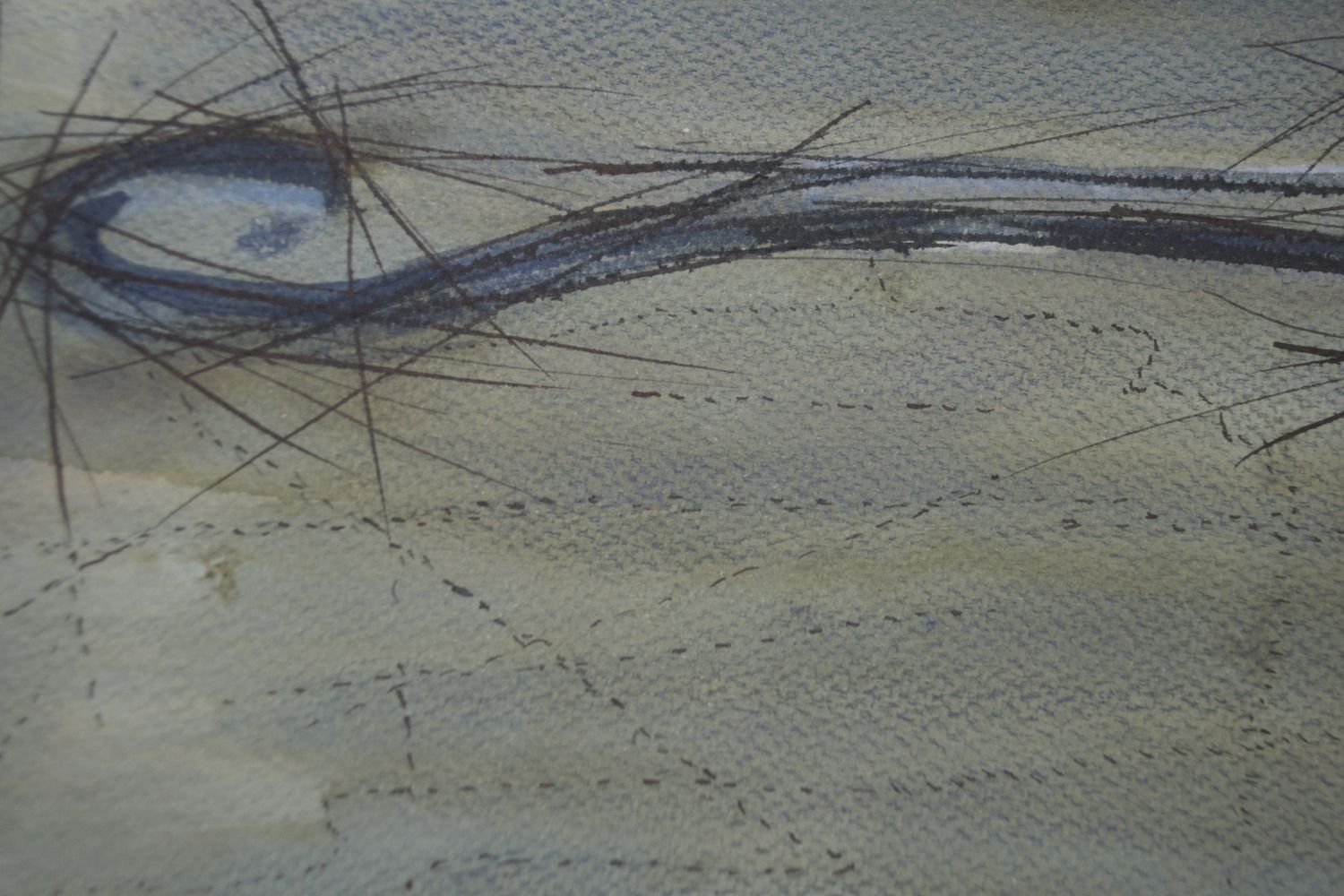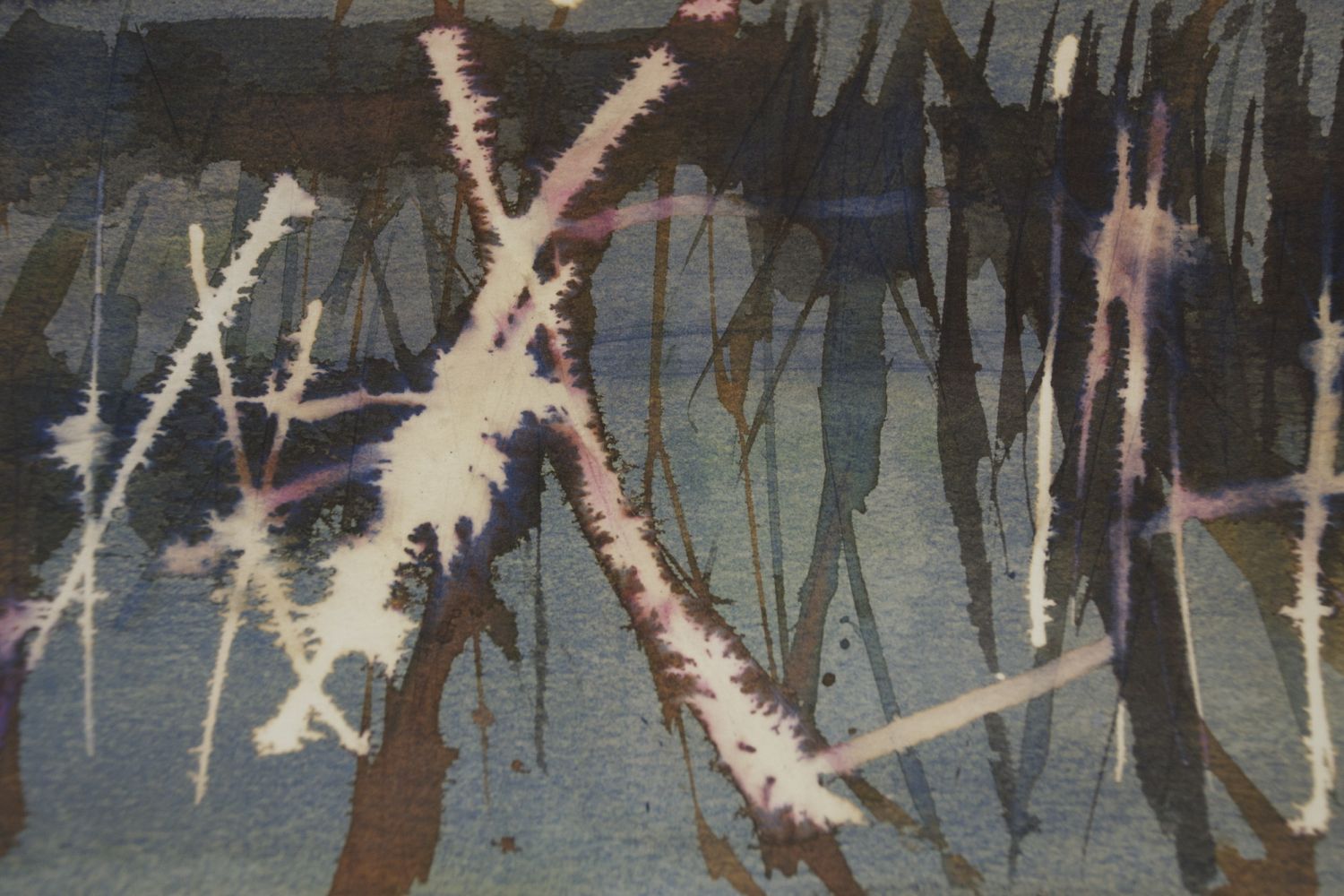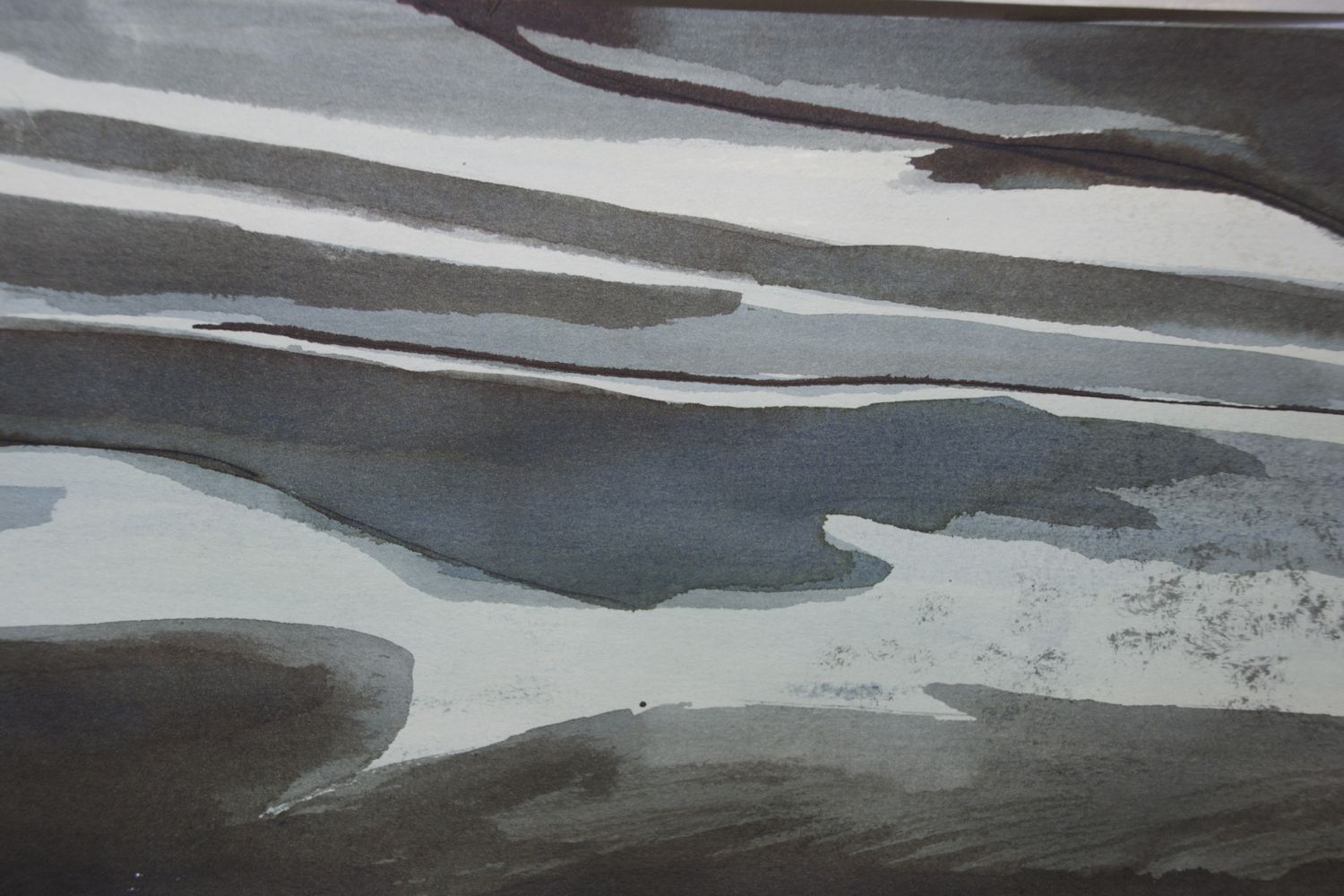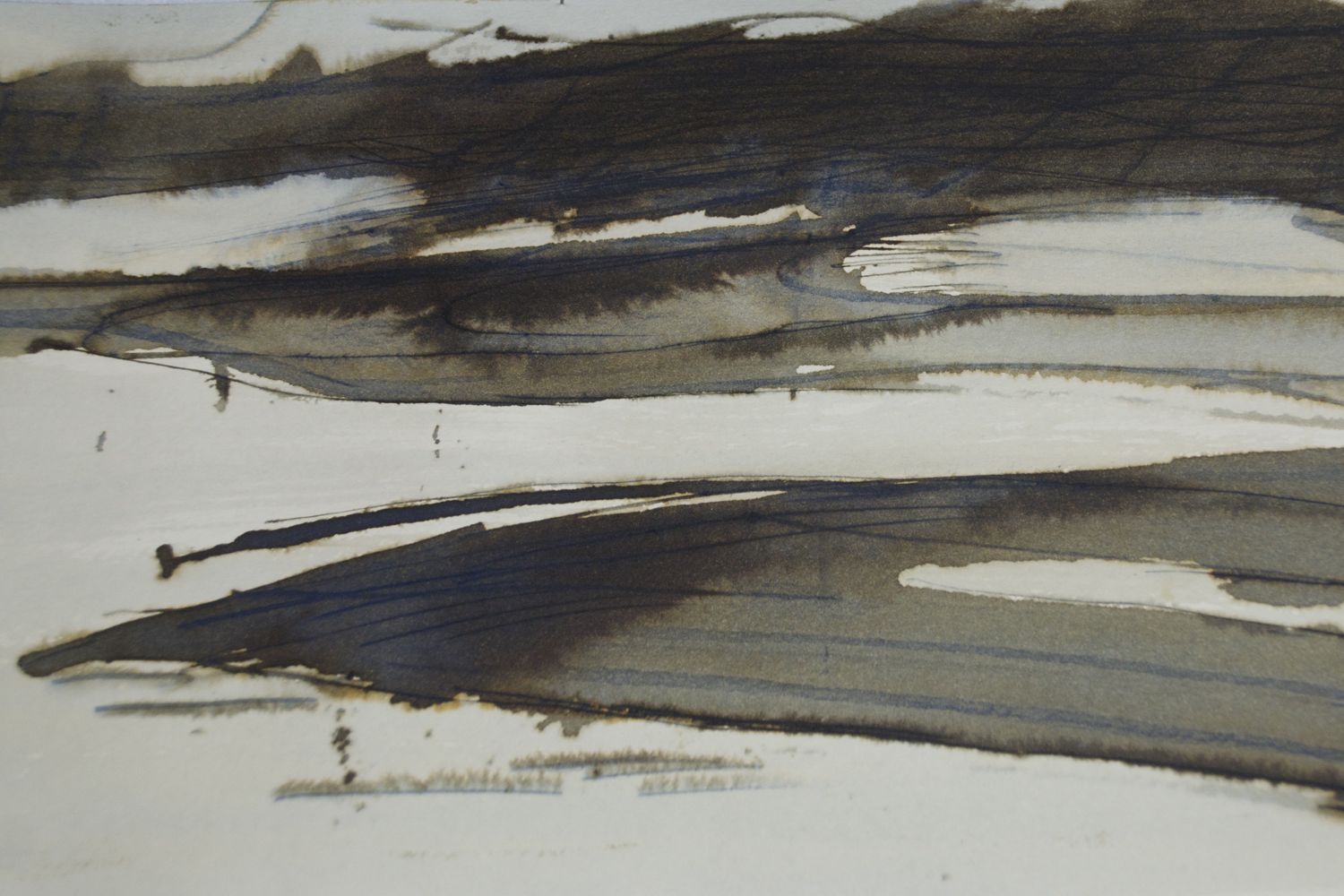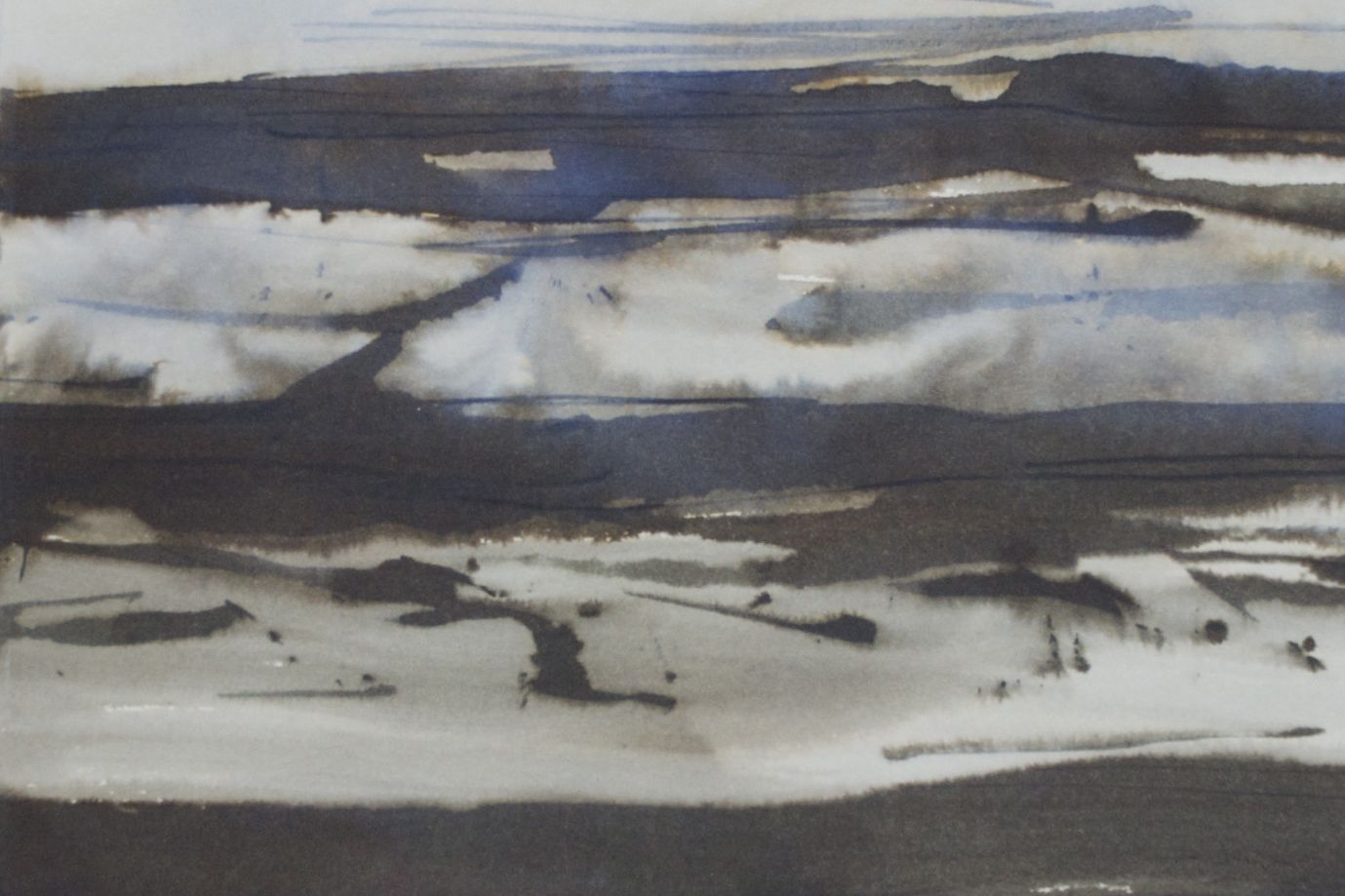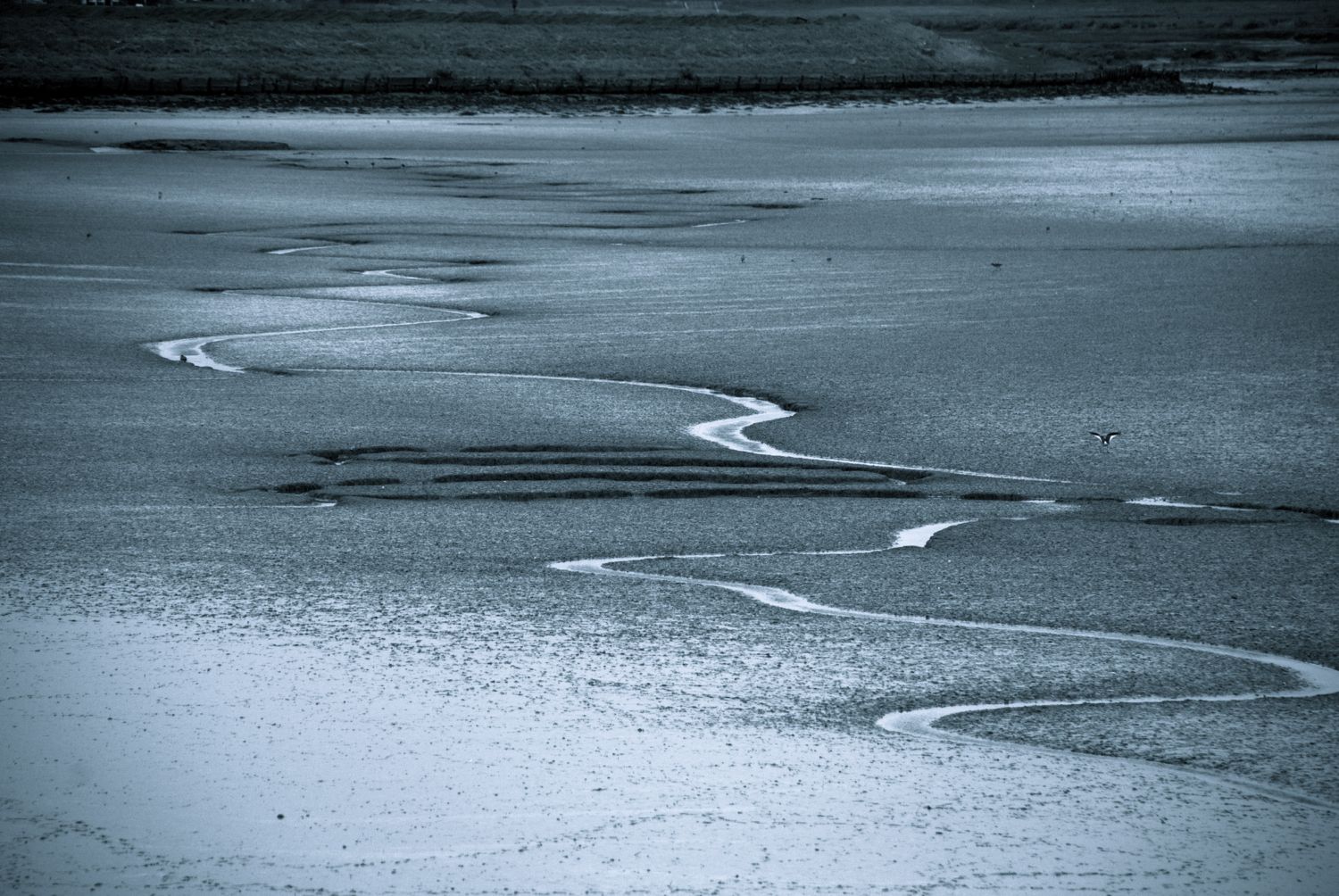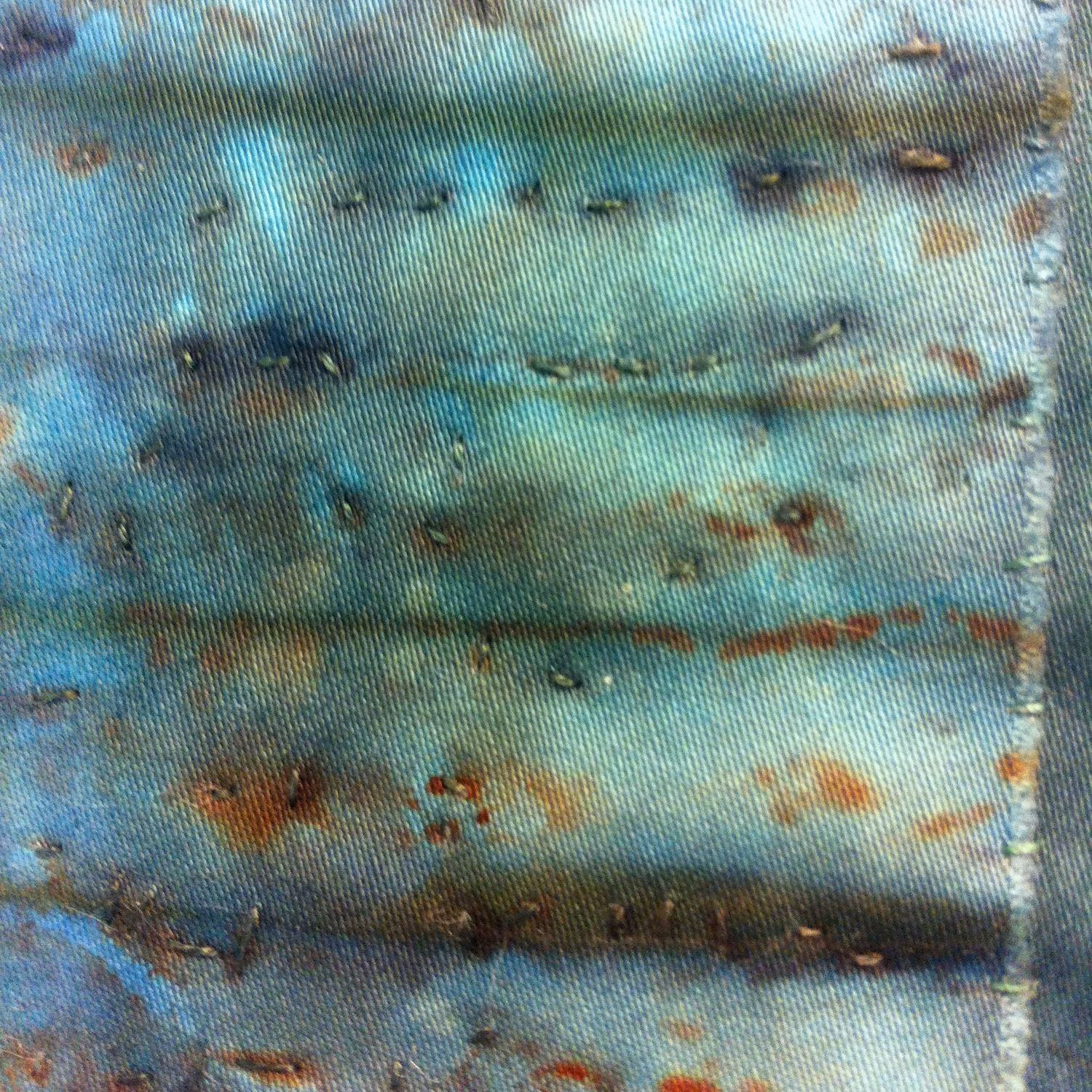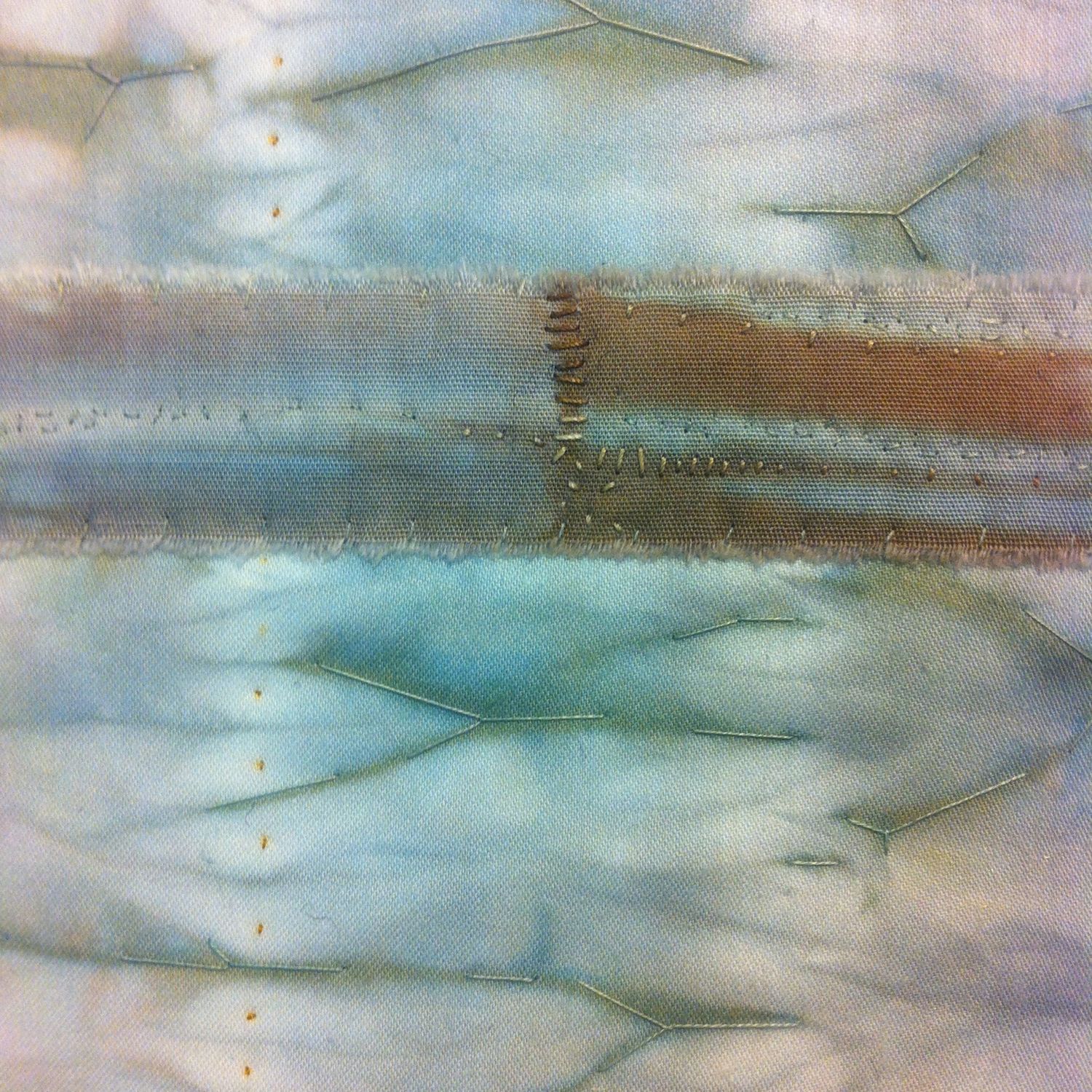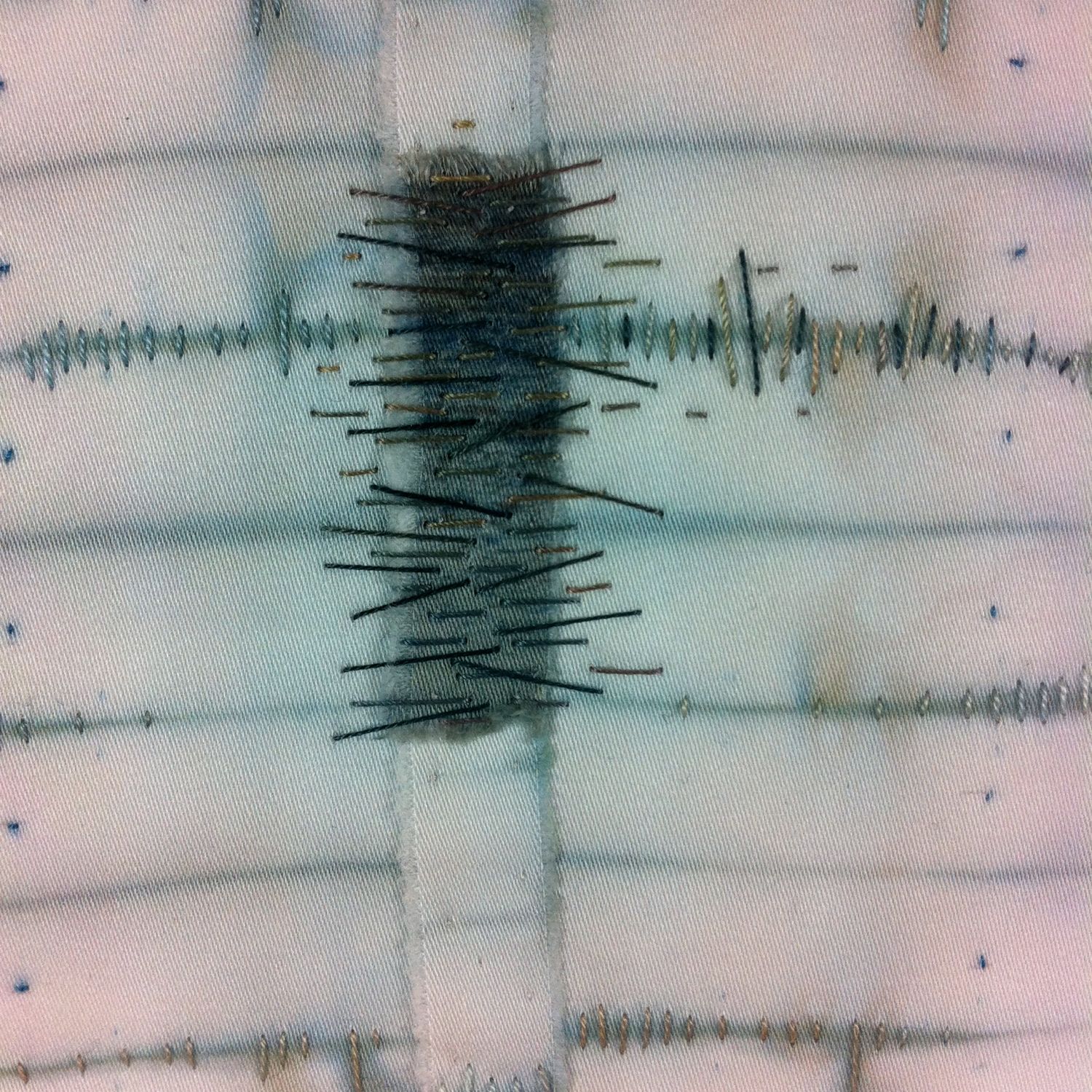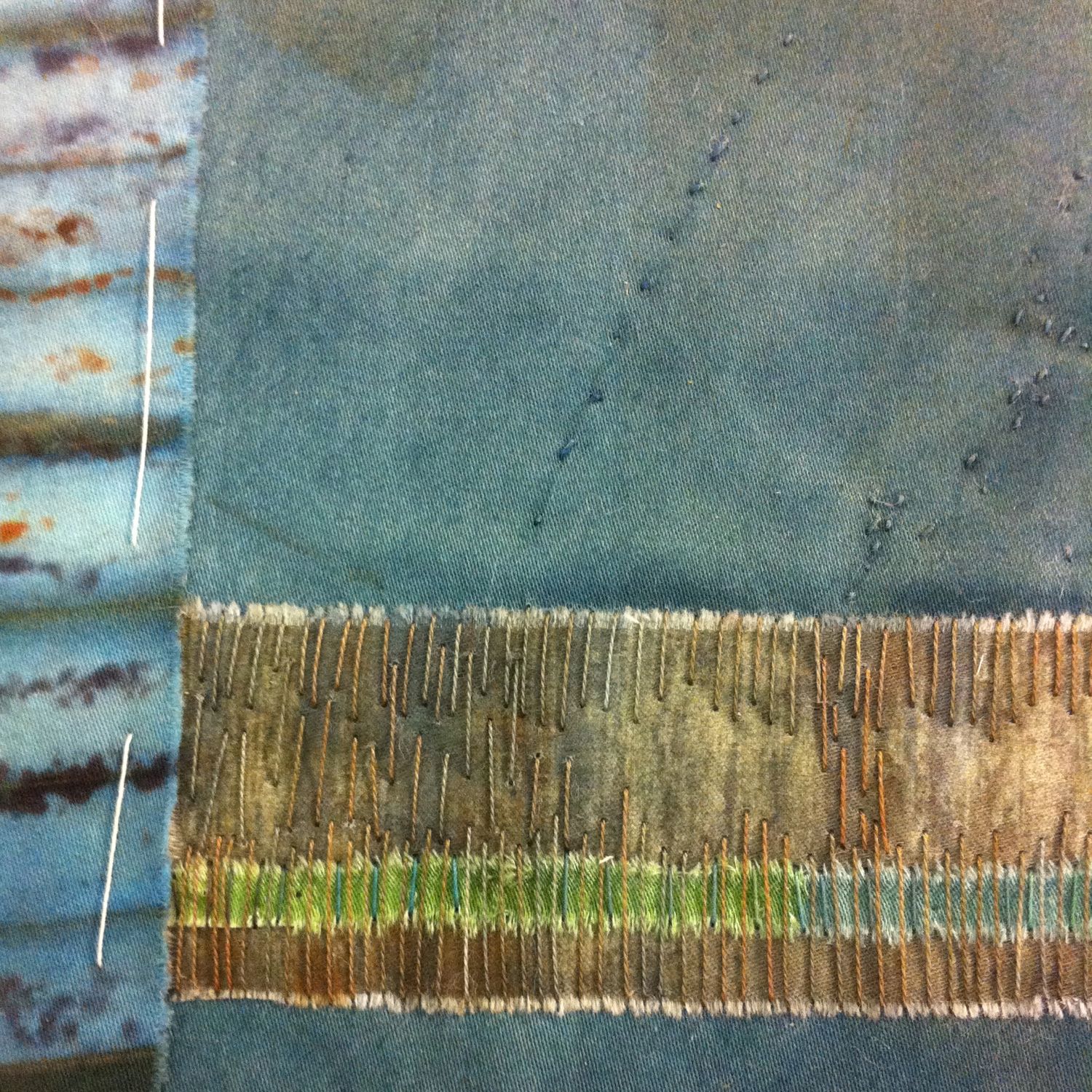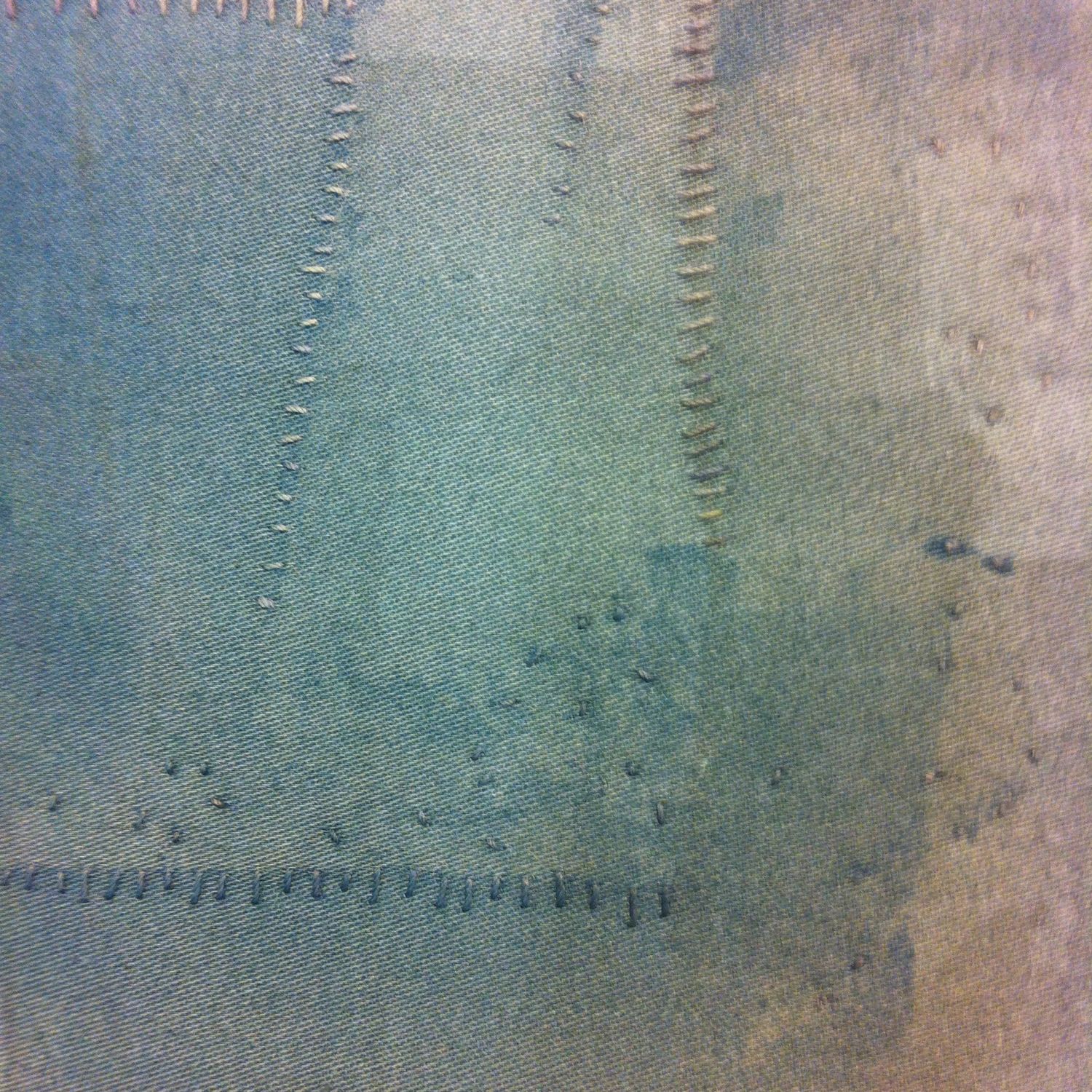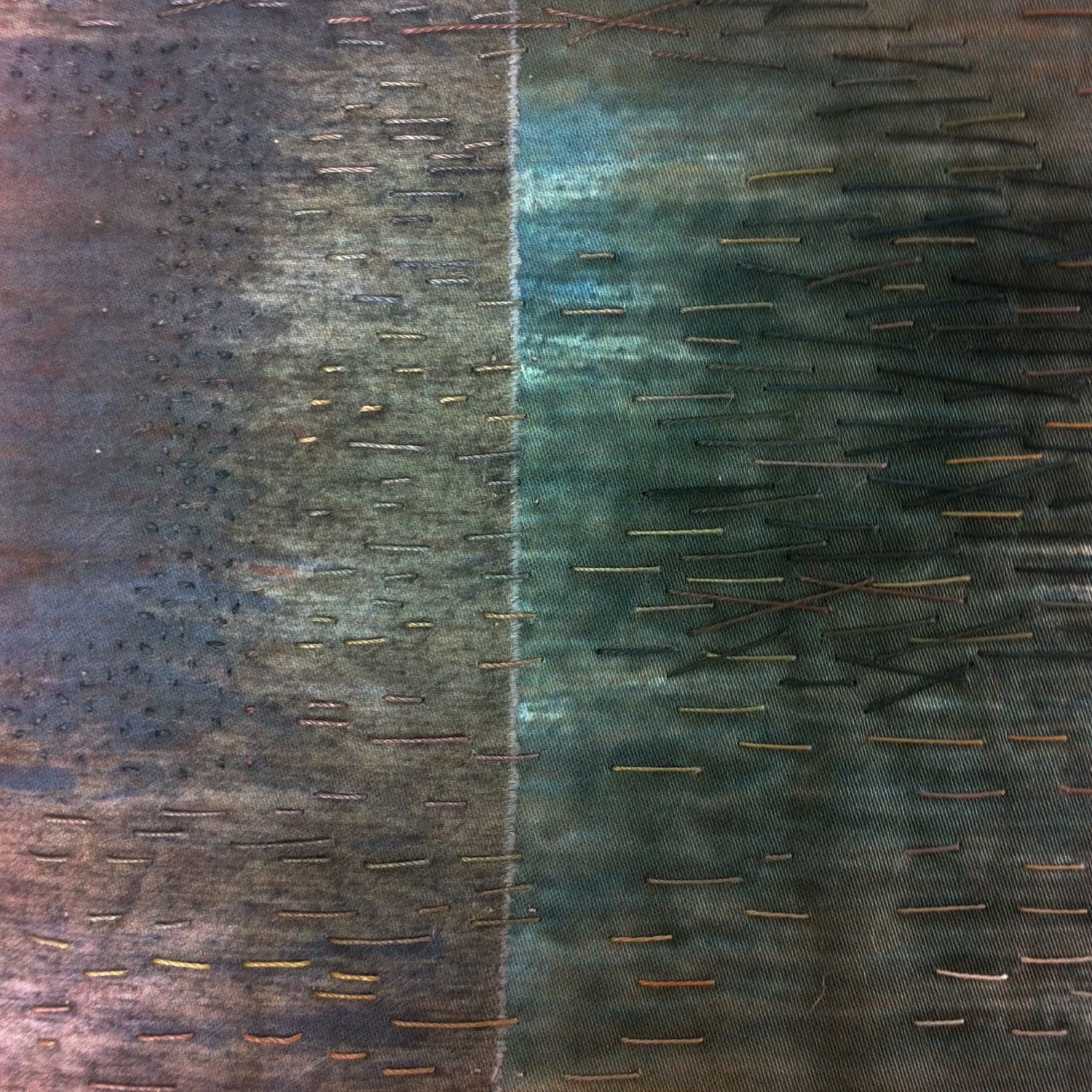Taking photographs is instinctive for me, drawing doesn't come so naturally. But I find photographs can be too passive - it's easy to end up with masses of images and ideas about them that are too vague or simplistic. I wanted to work with that last set of photographs and push my ideas further.
In one of my books, the jeweller, Kayo Saito, describes her drawings as "image training". I like that idea of drawing as a thinking process. I'm not interested in copying my photos or producing an accurate landscape drawing. What I want is to bring out the elements that interest me, play around with them and see what I can do with them.
And so for the last week or so the studio has been turned over to drawing and collage. I printed out my photos and cut them up. Slicing them up, taking them out of context, the linear elements that had caught my eye when I took the photographs in the first place became even more shibori-like. Arranging them into new compositions is similar to the way I would work with cloth, with lots of freedom to experiment with ways of juxtaposing the different lines and tones.
For the drawing, I'm using mainly ink. Ordinary fountain pen ink - although I'm using inks from Diamine who produce writing ink in 101 colours! I love the way the ink flows and bleeds on the page in unpredictable ways. Plus I can dilute it to make the palest washes or bleach it. In other words it behaves a lot like dye.
Hmmm. There's something here about my taste for media that I can't fully control. I think I rather like how they undermine my inner control freak and force me to let go of the outcome. And I love the random, organic effects that ink or dye can produce.
I'm not worrying about where all this is leading at the moment. There's no plan. But I'm enjoying this kind of thinking. It's generating ideas about composition, marks, colour that are moving me beyond my initial response to the photographs - which is exactly what I want.
clicking on the thumbnails will bring up a larger image

